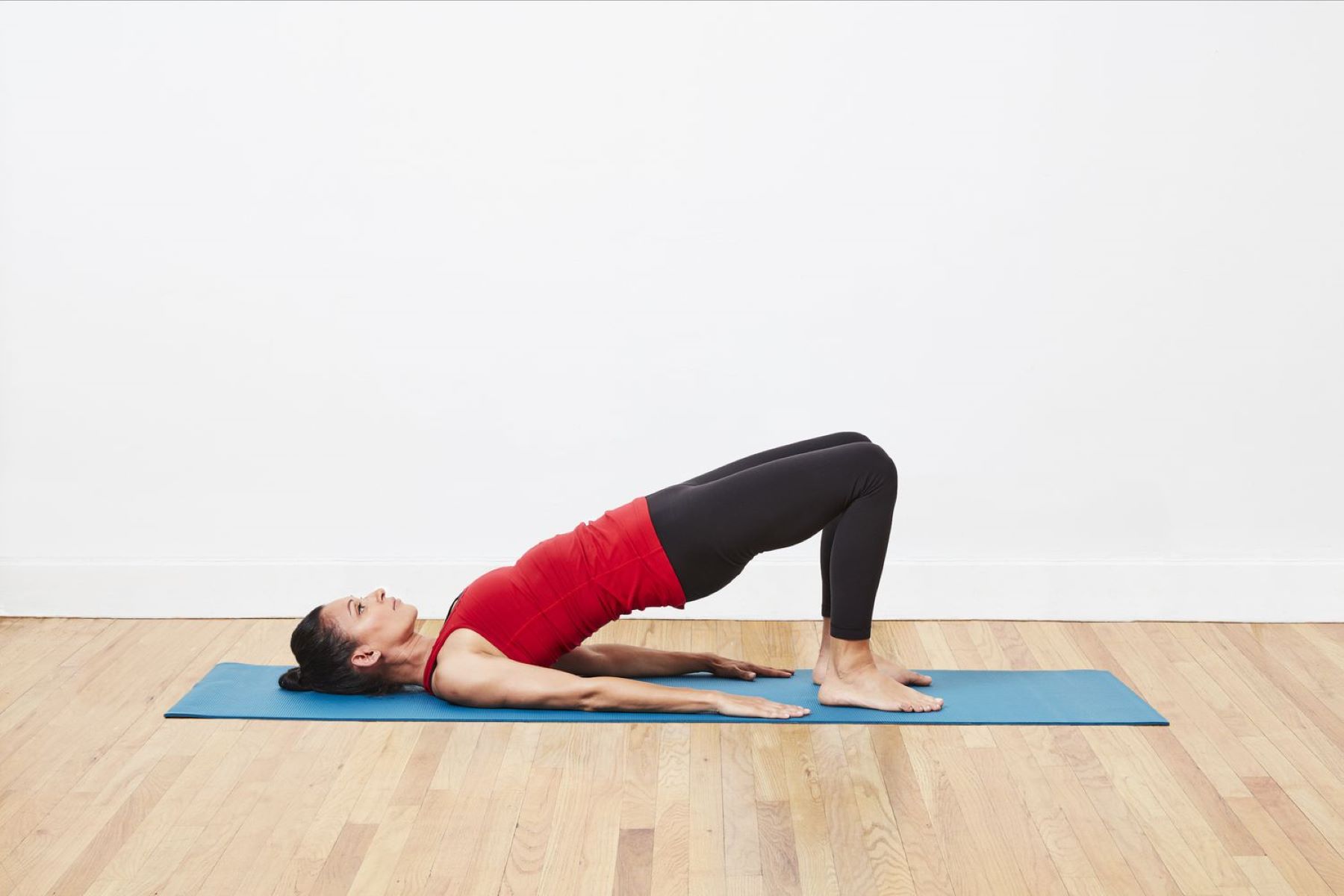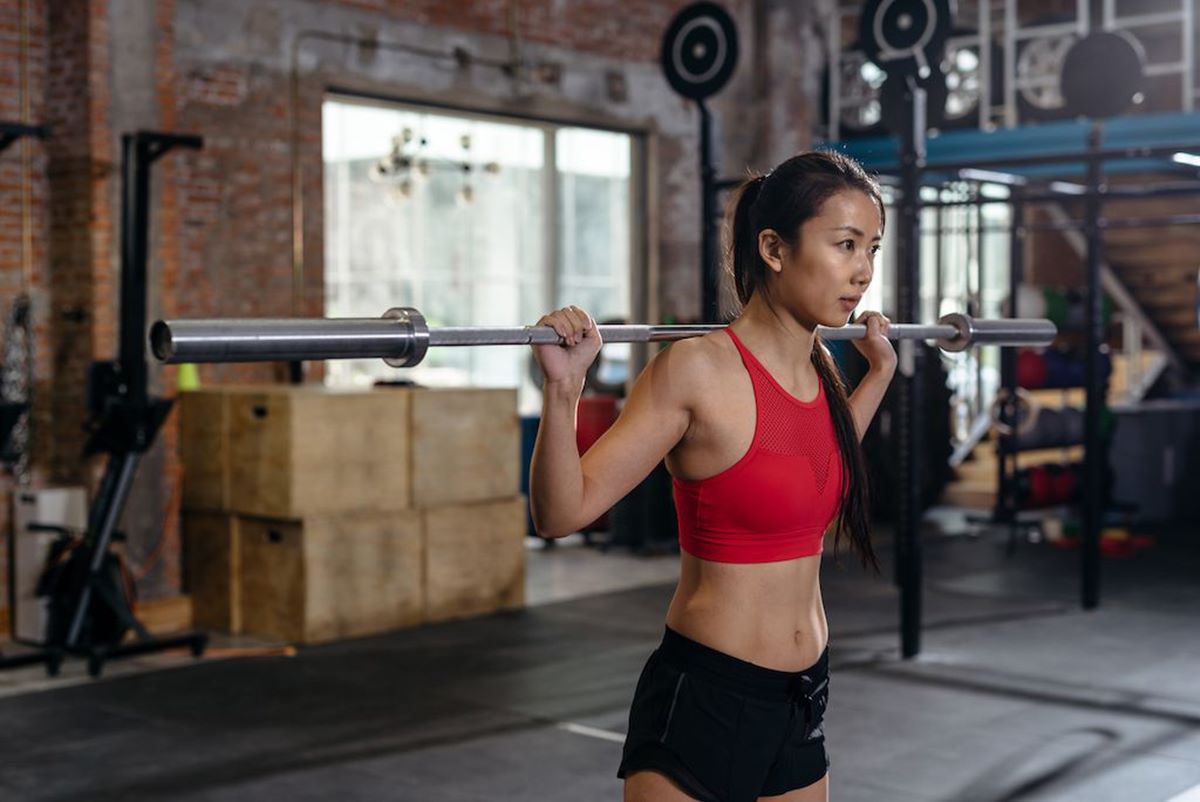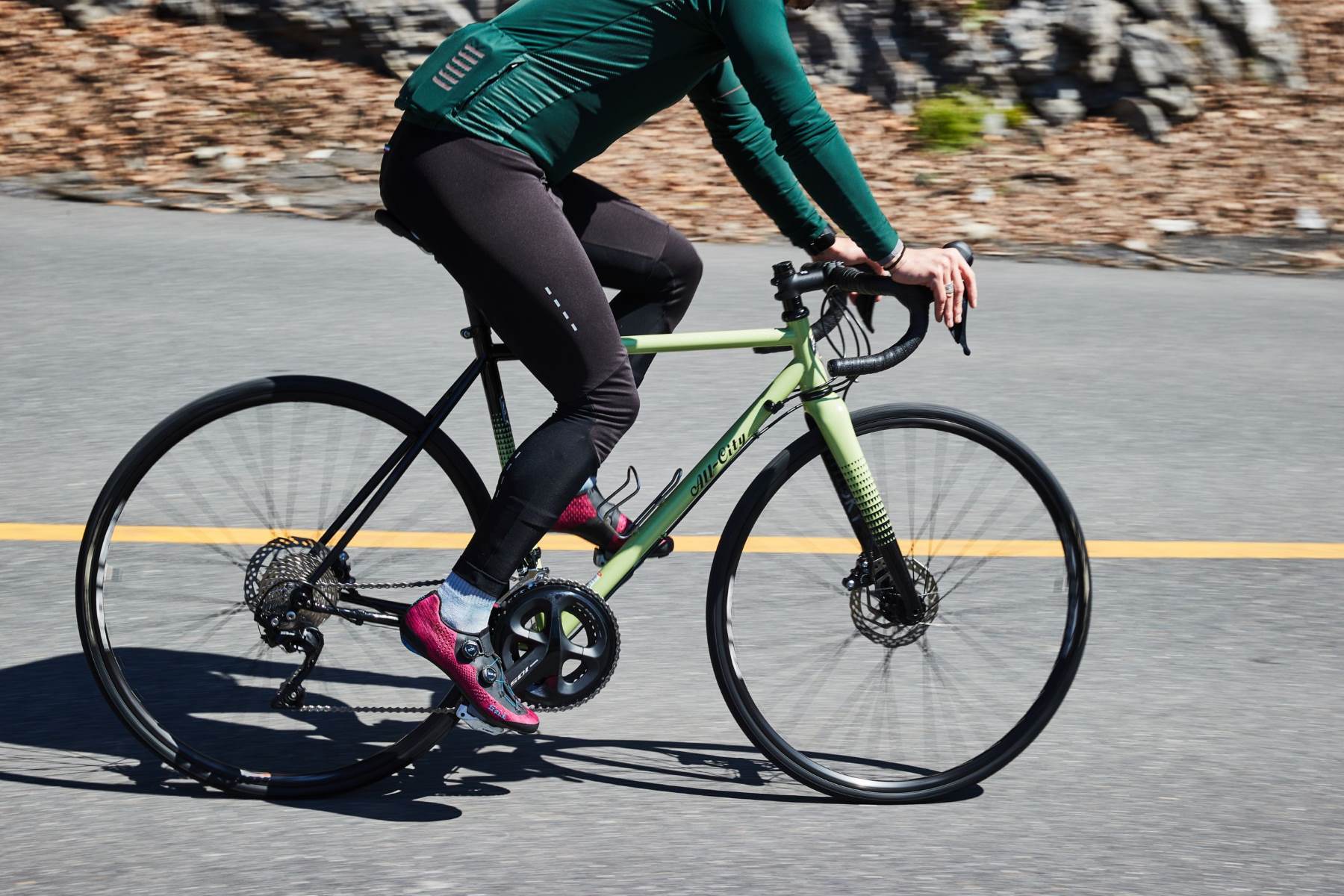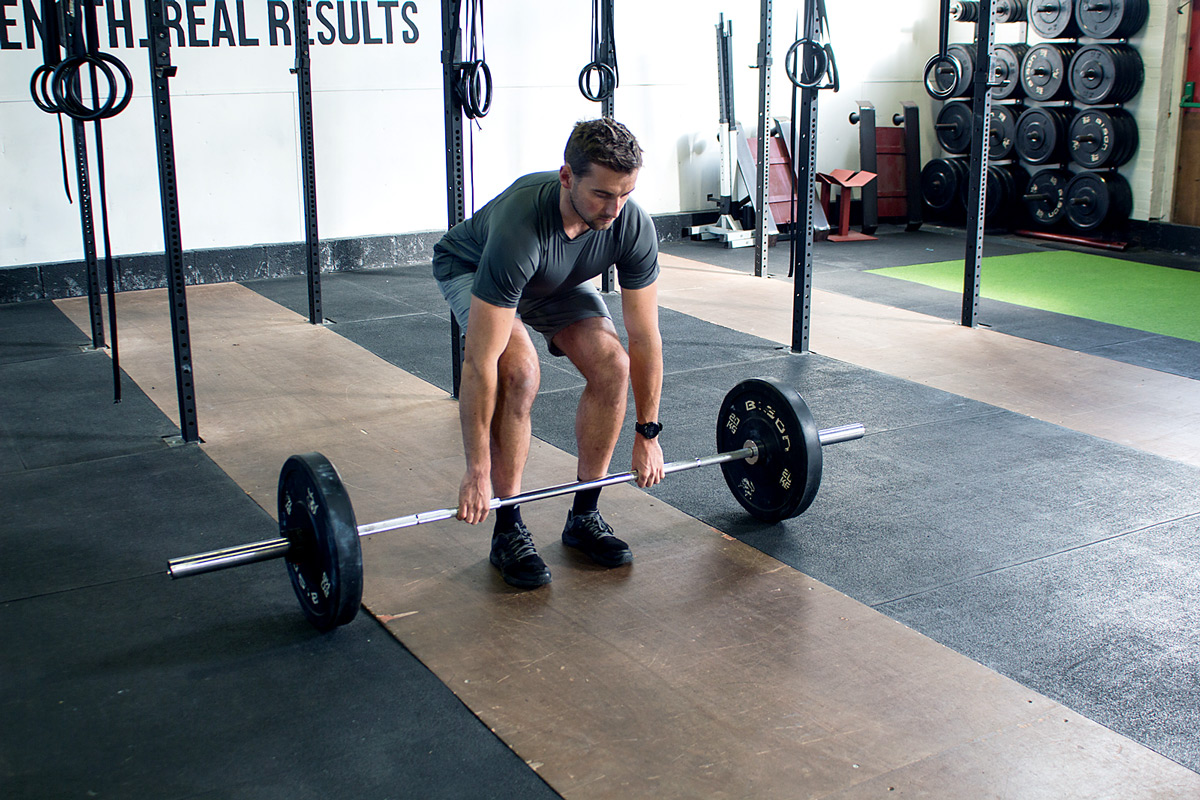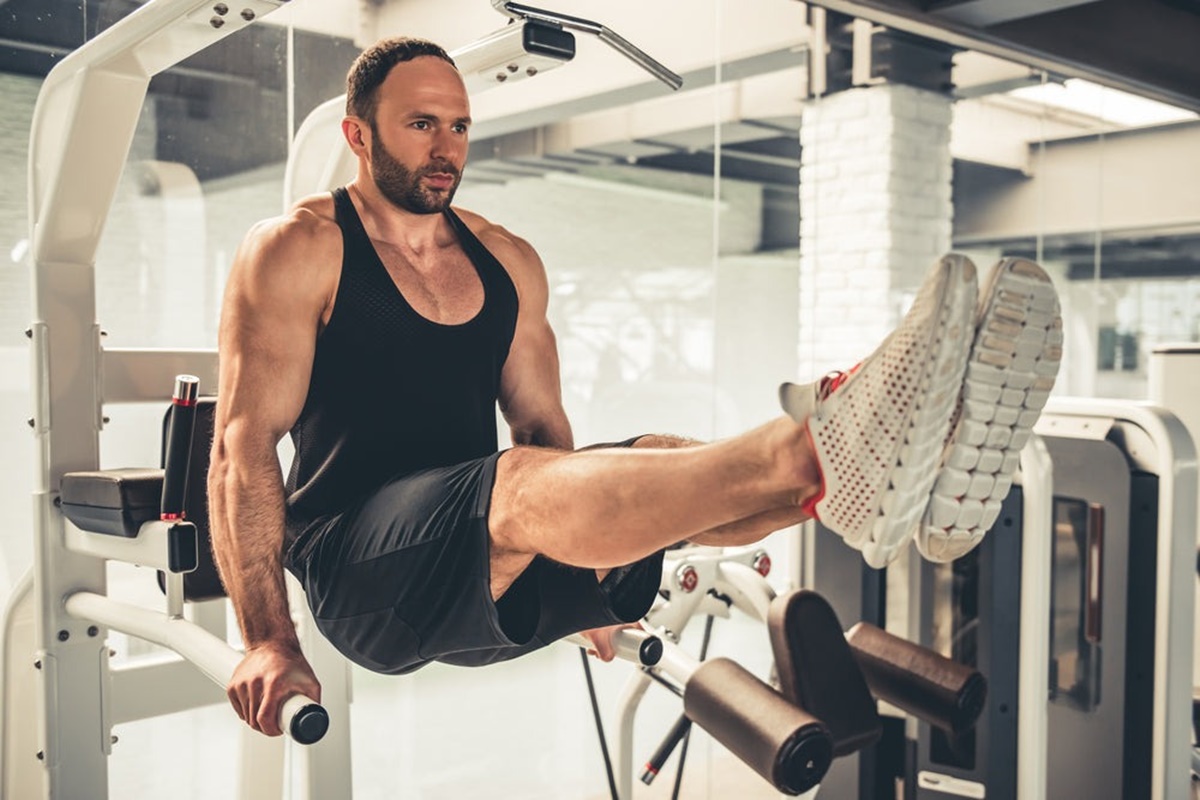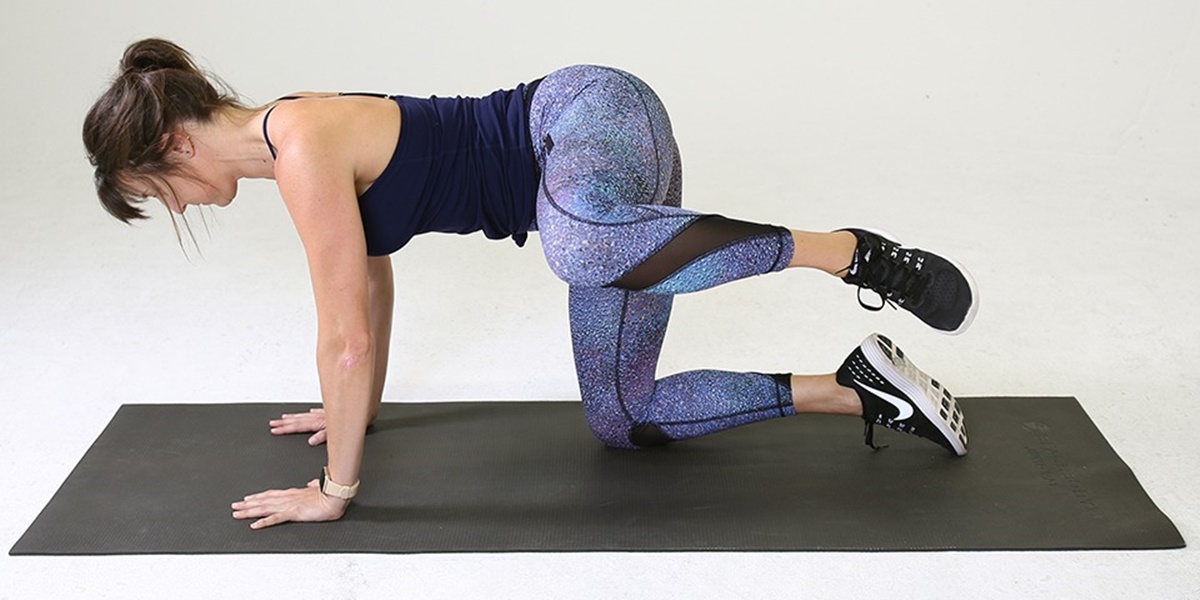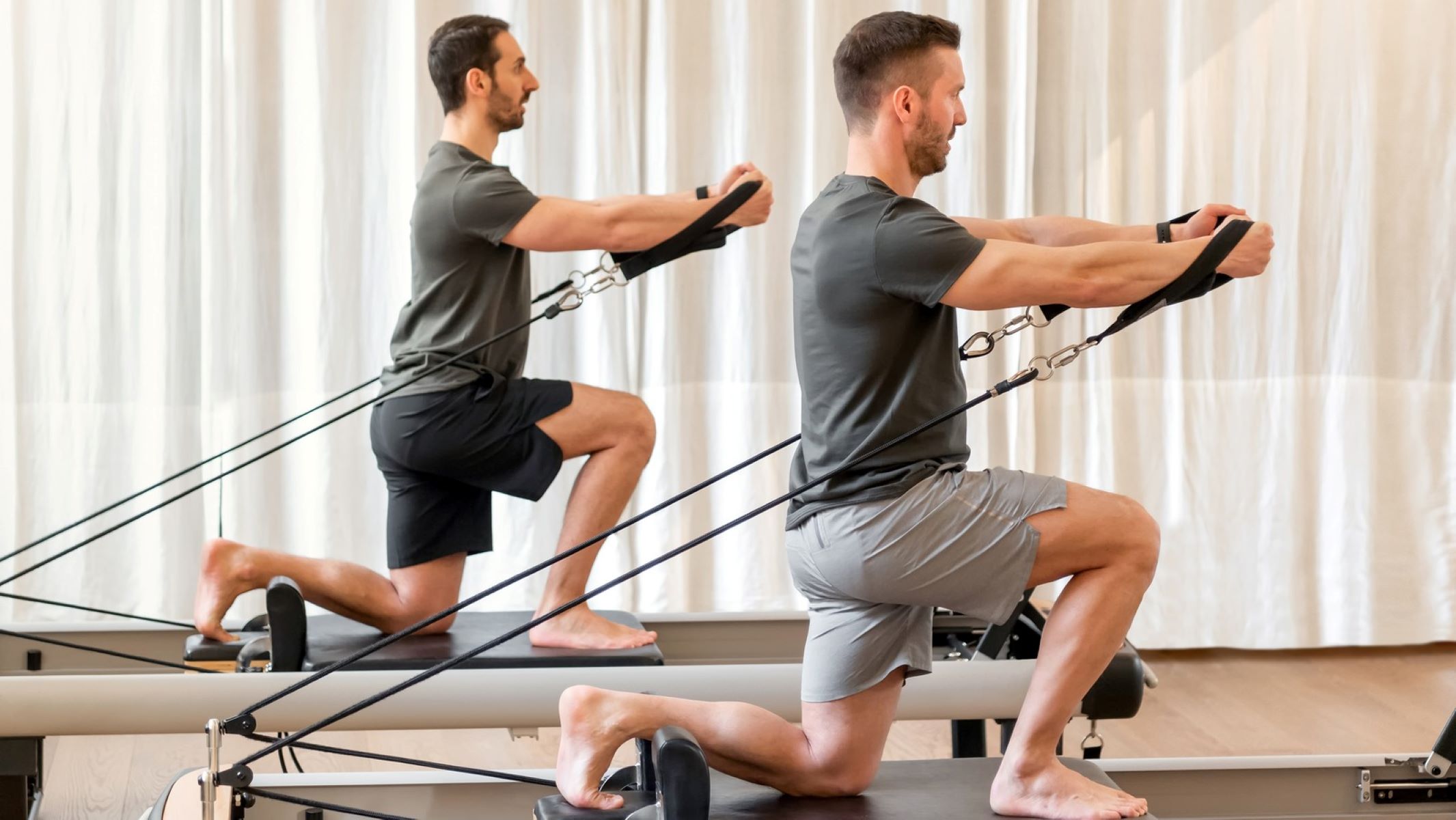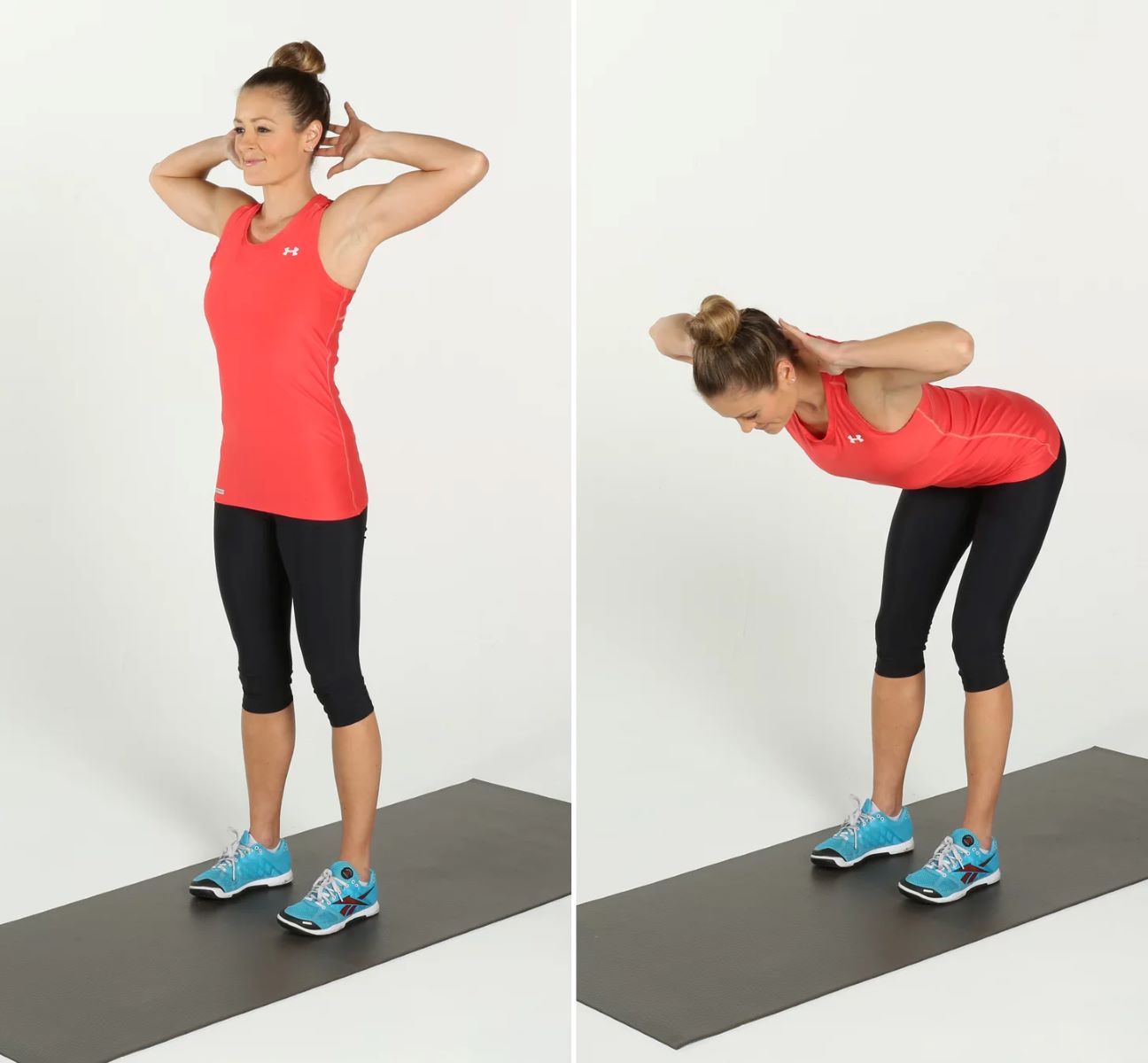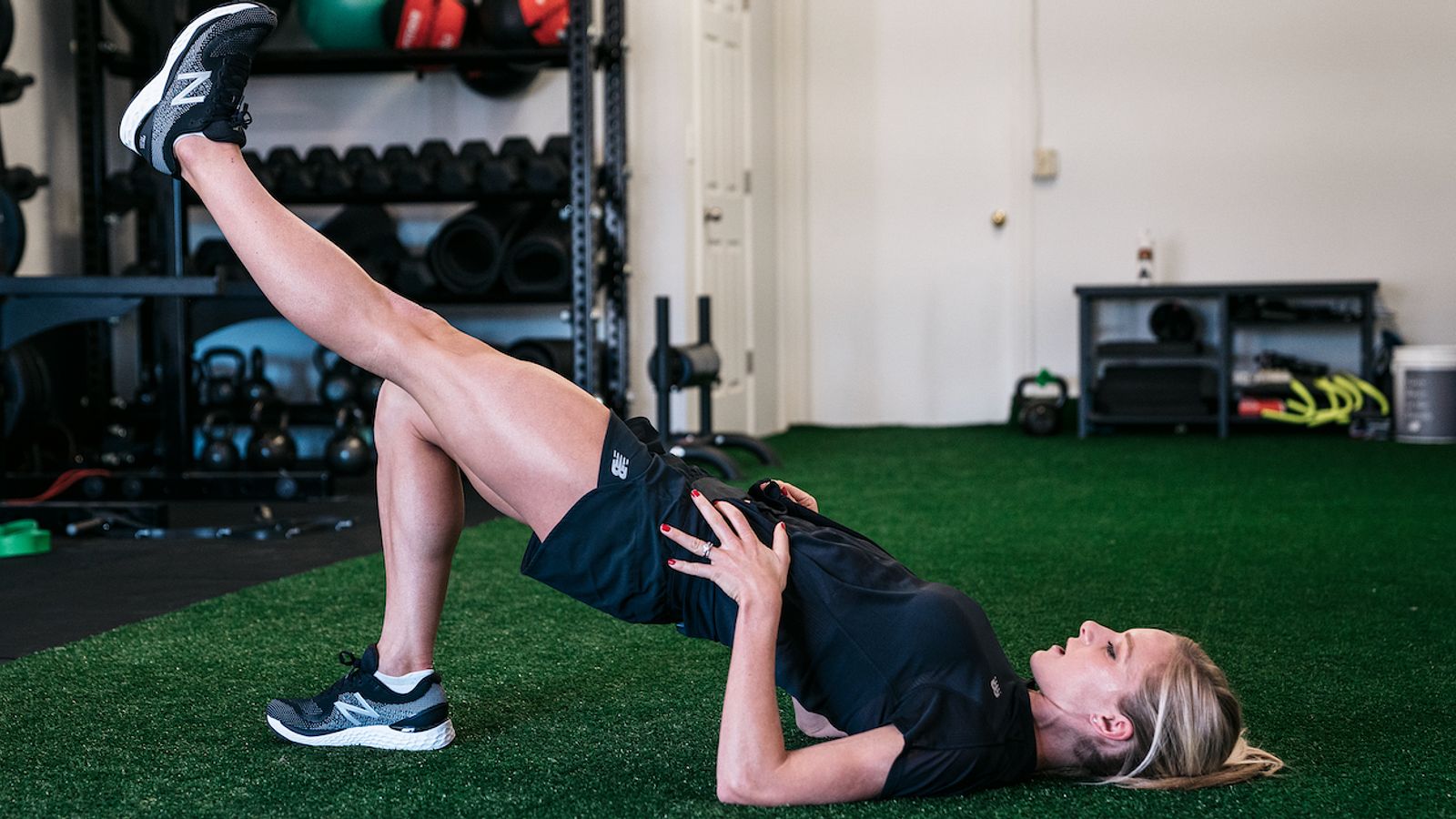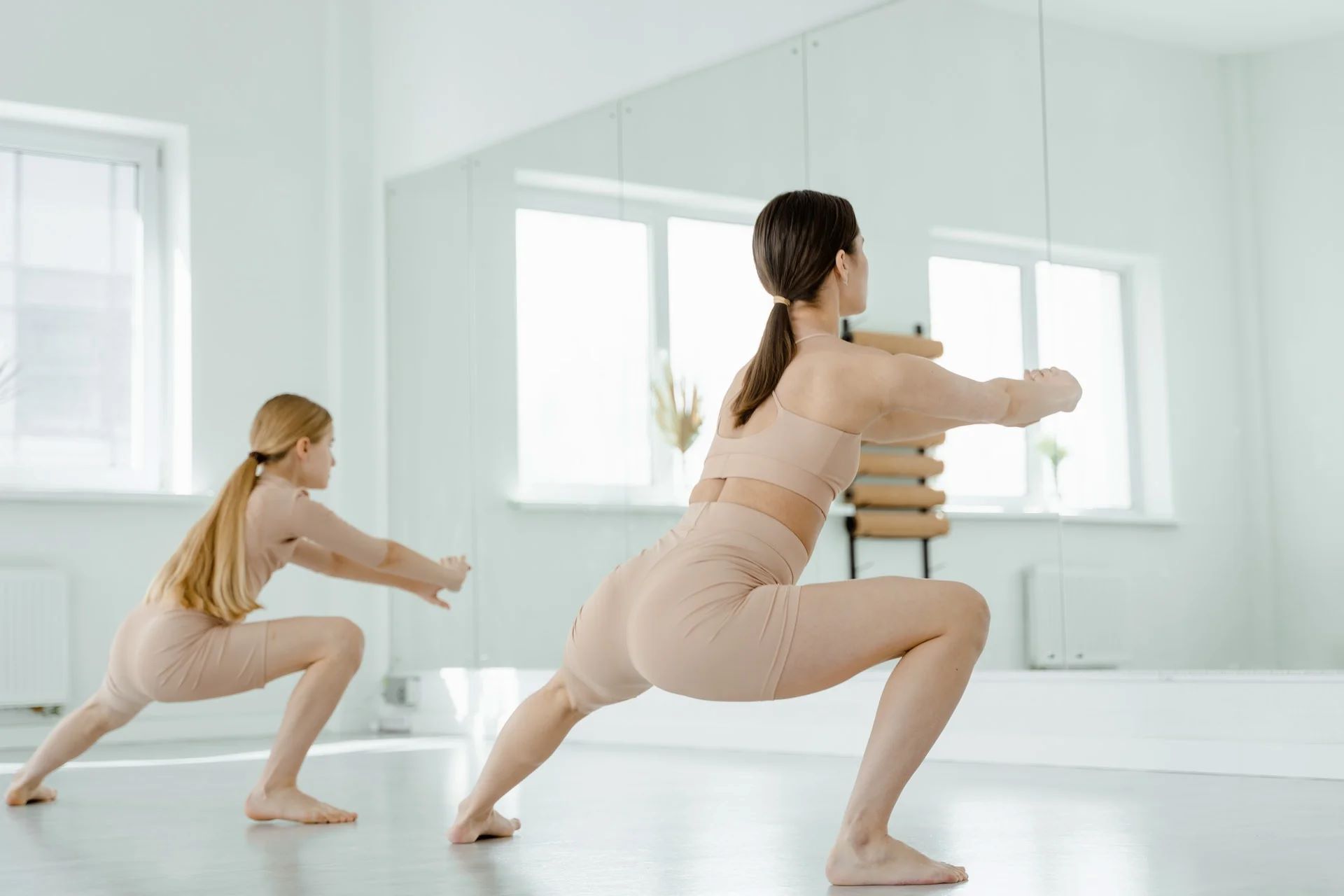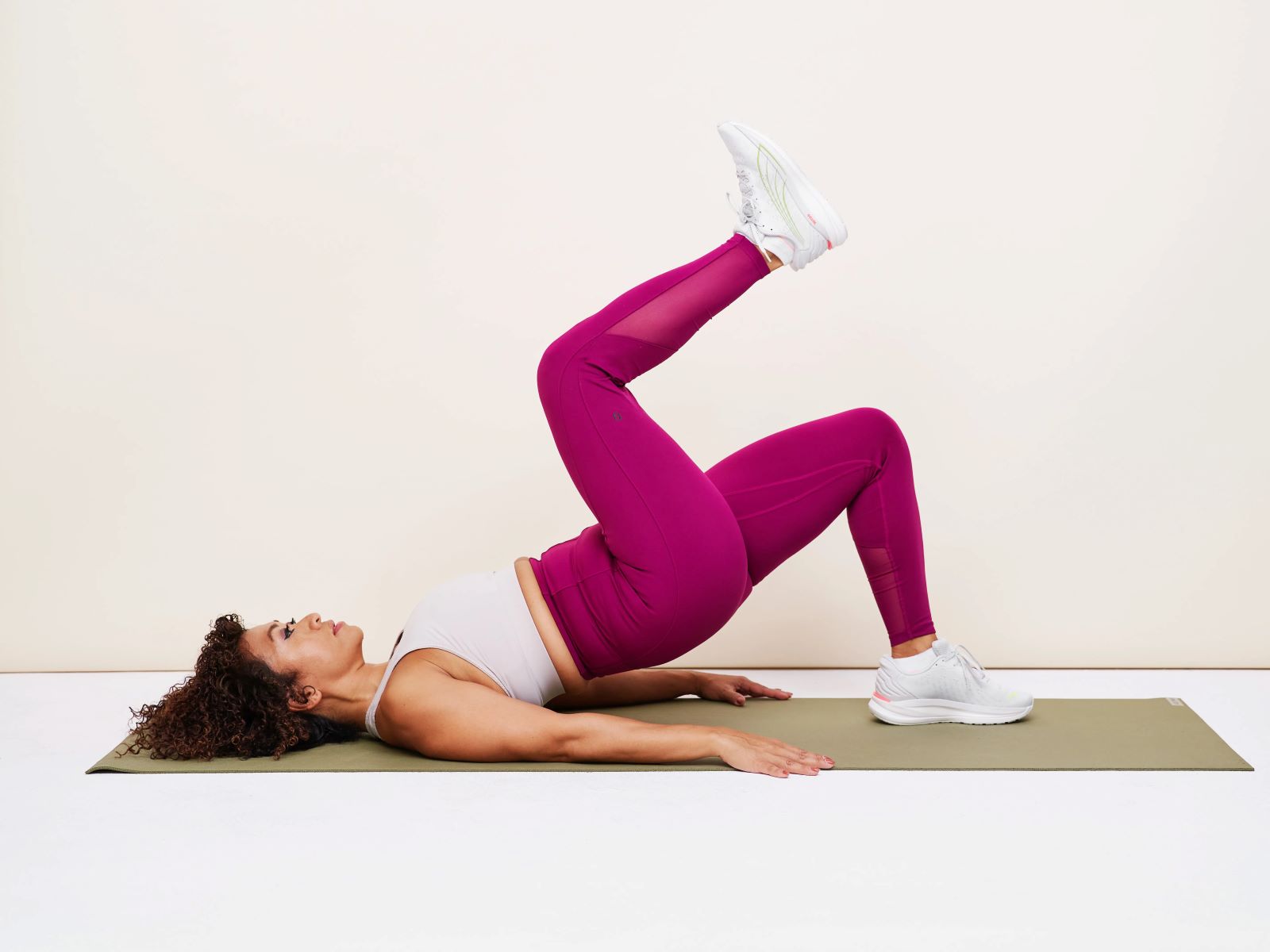

Featured
How To Workout Your Glutes
Modified: March 1, 2024
Learn how to effectively target your glutes with our featured workout guide. Sculpt and strengthen your glutes with these expert-approved exercises and tips.
Introduction
Welcome to the ultimate guide on how to work out your glutes! Whether you’re looking to sculpt a rounder, firmer booty or simply improve overall lower body strength, this article will provide you with the knowledge and exercises you need to achieve your goals.
The glute muscles, consisting of the gluteus maximus, gluteus medius, and gluteus minimus, are among the largest and most powerful muscles in the human body. They play a vital role in activities such as walking, running, and lifting, as well as providing stability and support to the hips and spine.
Working out the glutes not only helps to enhance the aesthetic appeal of your backside, but it also contributes to enhanced athletic performance, improved posture, and reduced risk of injury. Additionally, a strong set of glutes can improve overall lower body function, leading to better balance, agility, and functional movement.
While many people may associate glute workouts with women aiming for a curvier figure, it is important to note that both men and women can benefit from targeting and strengthening these muscles. Whether you’re a fitness enthusiast, athlete, or just looking to improve your overall fitness, incorporating glute exercises into your routine is essential.
In this comprehensive guide, we will delve into the basic anatomy of the glutes, discuss the importance of working out these muscles, and provide you with effective glute workout plans to help you reach your fitness goals.
So, grab your workout gear and get ready to feel the burn as we embark on this journey to sculpting strong, shapely glutes!
Understanding the Glutes
Before we dive into the various exercises and workout plans, it’s essential to have a basic understanding of the glute muscles and their function. The glutes, or gluteal muscles, are a group of muscles located in the buttocks that play a crucial role in lower body movement and stability.
The gluteal muscles consist of three main muscles: the gluteus maximus, gluteus medius, and gluteus minimus. The gluteus maximus, the largest muscle in the body, is responsible for hip extension, which occurs when you move your thigh backward. This muscle also provides power and stability during movements such as squats, deadlifts, and lunges.
The gluteus medius and gluteus minimus are located on the outer side of the hip and are responsible for hip abduction, which is the movement of the leg away from the body’s midline. These muscles work together to stabilize the pelvis during activities like walking, running, and jumping.
Understanding the function of each of these glute muscles is important because it allows you to target and engage them effectively during your workouts. By properly activating and strengthening these muscles, you can improve your athletic performance, increase lower body power, and enhance overall functional movement.
Moreover, having a strong set of glutes helps to support the lower back and maintain proper spinal alignment. Weak or underdeveloped glutes can lead to muscular imbalances, poor posture, and even chronic pain. By working on your glute muscles, you can pave the way for a healthier, more balanced body.
It’s also worth noting that the glute muscles are composed of both fast-twitch and slow-twitch muscle fibers. Fast-twitch fibers are responsible for explosive movements and power, while slow-twitch fibers contribute to sustained endurance and stability. Incorporating a variety of exercises into your glute workouts can help you target both types of muscle fibers for optimal results.
Now that we have a better understanding of the glute muscles and their role in the body, it’s time to delve into the importance of working out these muscles and the benefits it can bring to your overall fitness and well-being.
Importance of Working Out the Glutes
Working out the glutes goes far beyond achieving a well-defined rear end. It plays a critical role in promoting overall lower body strength, stability, and functional movement. Let’s explore the importance of targeting and training the glutes:
Improved Athletic Performance: Strong glute muscles are essential for athletes participating in sports that require explosive power, such as sprinting, jumping, and weightlifting. By developing your glutes, you can generate more power and propel yourself forward with greater force, leading to enhanced performance in your chosen sport.
Enhanced Lower Body Strength: The glutes are among the largest and strongest muscles in the body. Engaging these muscles through targeted workouts not only helps increase their strength, but also improves the overall strength of your lower body. This, in turn, can enhance your performance in various exercises, including squats, deadlifts, lunges, and other lower body movements.
Better Posture and Spinal Alignment: Weak glutes can contribute to poor posture and improper spinal alignment, leading to aches, pains, and even injuries. Strengthening the glutes helps to stabilize the pelvis, supporting the lower back and promoting optimal alignment. This can alleviate back pain and improve overall posture, leading to better overall spinal health.
Reduced Risk of Injuries: Strong glute muscles contribute to better stability and control during movements, reducing the risk of injuries to the lower body. By properly activating and strengthening the glutes, you can help prevent common issues like knee pain, IT band syndrome, and hip instability. Additionally, strong glutes can also contribute to improved knee and hip joint health.
Enhanced Functional Movement: Our glutes play a key role in everyday activities such as walking, climbing stairs, and standing up from a seated position. By strengthening these muscles, you improve your ability to perform these movements with ease and efficiency. Whether it’s carrying groceries, playing with your kids, or simply going about your daily life, having strong glutes can make these tasks much easier.
Improved Body Composition: Working out the glutes can also contribute to improved body composition. Building muscle in the glute area can enhance the appearance of your buttocks, giving them a firmer, more sculpted look. Additionally, having a higher proportion of muscle mass can also help increase your metabolic rate, contributing to potential fat loss and overall body toning.
With all these benefits in mind, it’s clear that working out the glutes is not only important for aesthetic purposes but also for enhancing overall strength, functionality, and health. In the next section, we will explore the basic anatomy of the glutes to better understand how these muscles can be effectively trained.
Basic Anatomy of the Glutes
In order to effectively work out and target the glute muscles, it’s important to have a basic understanding of their anatomy. The glute muscles, also known as the gluteal muscles, are a group of three main muscles located in the buttocks: the gluteus maximus, gluteus medius, and gluteus minimus.
Gluteus Maximus: The gluteus maximus is the largest muscle in the gluteal group and the most superficial. It is responsible for hip extension, which involves moving the thigh backward and straightening the hip joint. This muscle is activated during movements such as squats, lunges, deadlifts, and running uphill. Developing a strong gluteus maximus can help improve your overall lower body strength and power.
Gluteus Medius: The gluteus medius is located on the outer side of the hip, just below the gluteus maximus. It functions primarily as a hip abductor, which means it moves the leg away from the body’s midline. This muscle plays a crucial role in stabilizing the pelvis during walking, running, and other dynamic movements. Strengthening the gluteus medius can help improve your balance, stability, and overall lower body control.
Gluteus Minimus: The gluteus minimus is the smallest and deepest of the gluteal muscles. It is also located on the outer side of the hip, beneath the gluteus medius. It works in conjunction with the gluteus medius to abduct the hip and stabilize the pelvis. Strengthening the gluteus minimus helps to maintain proper lower body alignment and prevent compensatory movement patterns.
It’s worth noting that the gluteal muscles are composed of both fast-twitch and slow-twitch muscle fibers. Fast-twitch muscle fibers are responsible for generating quick, explosive movements, while slow-twitch fibers contribute to sustained endurance and stability. Incorporating a variety of exercises into your glute workouts can help target and engage both types of muscle fibers for optimal results.
In addition to the three main gluteal muscles, there are other muscles that play a role in glute activation and overall lower body function. The hamstrings, quadriceps, core muscles, and hip flexors all work in conjunction with the glutes to perform movements and maintain stability.
Having a basic understanding of the anatomy of the glutes can assist in selecting and performing exercises that effectively target and activate these muscles. In the next section, we will discuss how to properly prepare for a glute workout.
Preparing for a Glute Workout
Before diving into a glute workout, it’s crucial to properly prepare your body to maximize the effectiveness and minimize the risk of injury. Here are some key steps to take when preparing for a glute workout:
1. Warm up: Begin your glute workout with a dynamic warm-up routine to increase blood flow to the muscles and prepare them for activity. This can include exercises such as jogging, jumping jacks, leg swings, and hip rotations. Spend around 5-10 minutes on your warm-up to gradually raise your heart rate and warm up the glute muscles.
2. Activate the glutes: Before jumping into heavy lifts or intense exercises, it’s essential to activate the glute muscles properly. This ensures that they are engaged and ready to work during your workout. Incorporate exercises like glute bridges, clamshells, or lateral band walks to wake up the glute muscles and promote better mind-muscle connection.
3. Choose appropriate resistance or weight: Depending on your fitness level, choose the right resistance or weight for your glute exercises. You want it to be challenging but not to the point where your form suffers. It’s better to start with lighter resistance and gradually increase as you progress.
4. Proper form and technique: To get the most out of your glute exercises and prevent injury, focus on maintaining proper form and technique. Pay attention to the alignment of your hips, knees, and ankles during movements. Engage your core and keep a neutral spine. If you’re unsure about the correct form, consider consulting a fitness professional or watching instructional videos.
5. Rest and Recovery: Allow your glute muscles to recover and rebuild after a workout. Adequate rest is essential for muscle growth and preventing overuse injuries. Incorporate rest days into your workout routine and prioritize getting enough sleep and nutrition for proper recovery.
6. Stay hydrated: Hydration plays a crucial role in muscle performance and overall workout efficiency. Drink water before, during, and after your glute workouts to stay properly hydrated and maintain optimal muscle function.
7. Listen to your body: Pay attention to how your body feels during the workout. If you’re experiencing pain or discomfort, modify the exercise or take a break. It’s important to push yourself, but not at the expense of your safety and well-being.
By following these steps and properly preparing for your glute workout, you can ensure a safe and effective training session. Now that we’re equipped with the knowledge of preparation, it’s time to explore warm-up exercises specifically designed to activate the glutes.
Warm-Up Exercises for the Glutes
A proper warm-up is essential to prepare your glute muscles for the upcoming workout. Incorporating specific warm-up exercises targeted at activating the glutes can help improve their engagement and maximize their effectiveness. Here are some effective warm-up exercises for the glutes:
1. Glute Bridges: Lie flat on your back with your knees bent and feet flat on the ground. Engage your glutes and lift your hips off the ground, pressing through your heels. Squeeze your glutes at the top of the movement and lower back down with control. Perform 10-15 reps to wake up the glute muscles.
2. Clamshells: Lie on your side with your knees bent and feet together. Keeping your feet together, open your top knee as far as comfortable while keeping your hips stacked. Squeeze your glutes at the top of the movement and lower your knee back down. Do 10-15 reps on each side to activate the gluteus medius.
3. Lateral Band Walks: Place a resistance band around your lower thighs, just above your knees. Stand with your feet shoulder-width apart and bend your knees slightly. Take a step to the side, maintaining tension in the band, and then bring your other foot in to meet it. Alternate side steps for 10-12 reps per side. This exercise helps activate the gluteus medius and minimus.
4. Fire Hydrants: Begin on all fours, with your hands directly under your shoulders and knees under your hips. Keeping your knee bent, lift one leg out to the side, like a dog lifting its leg to hydrant. Keep your core engaged and focus on the movement happening at the hip joint. Do 10-15 reps per side.
5. Bird Dogs: Start on all fours, with your hands directly under your shoulders and knees under your hips. Extend your opposite arm and leg simultaneously, keeping your back straight and core engaged. Focus on contracting your glutes as you extend your leg. Return to the starting position and repeat on the other side. Perform 8-10 reps per side.
Remember to perform these warm-up exercises in a controlled manner, focusing on activating and engaging the glute muscles. Take your time and gradually increase the range of motion as you warm up. With these warm-up exercises completed, your glutes are primed and ready for your main workout.
In the next section, we will dive into various effective glute workout plans that will help you build strength, sculpt your glutes, and improve overall lower body functionality.
Effective Glute Workout Plans
When it comes to effectively targeting and strengthening your glute muscles, incorporating a well-rounded workout plan is key. Here are some effective glute workout plans that can help you build strength, shape your glutes, and improve overall lower body functionality:
1. Full Body Workout: This workout plan includes compound exercises that engage multiple muscle groups, with a focus on the glutes. Some exercises to include are squats, lunges, deadlifts, and hip thrusts. Aim for 3-4 sets of 10-12 repetitions per exercise, gradually increasing the weight as your strength improves.
2. Hypertrophy Workout: The goal of this workout plan is to build muscle mass in the glutes. Incorporate exercises such as Bulgarian split squats, barbell glute bridges, step-ups, and cable kickbacks. Perform 4-5 sets of 8-10 reps per exercise, using a challenging weight. Focus on proper form and maintaining tension in the glutes throughout each movement.
3. Circuit Training: This high-intensity workout alternates between different glute exercises, providing both strength and cardiovascular benefits. Examples of exercises to include are jump squats, box jumps, kettlebell swings, and mountain climbers. Do each exercise for 30-45 seconds, with a 15-second rest in between. Complete 3 rounds of the circuit for a challenging and effective glute workout.
4. Interval Training: Incorporating interval training into your glute workout can help improve muscular endurance and burn calories. Perform exercises such as squat jumps, skater jumps, high knees, and burpees. Work at a high intensity for 30 seconds, followed by a 15-second rest. Repeat for 10-15 minutes to get your heart rate up and engage the glutes.
5. Booty Band Workout: Resistance bands can add an extra challenge to your glute exercises. Incorporate exercises like banded squats, banded lateral walks, banded clamshells, and banded kickbacks. Perform 3 sets of 12-15 reps per exercise, focusing on maintaining tension in the glutes throughout the movement. The bands provide constant resistance, targeting the glutes effectively.
Remember to listen to your body and modify exercises or adjust weights as needed. It’s important to challenge yourself, but not at the expense of proper form and safety. Incorporating variety into your glute workouts can help prevent plateauing and keep your workouts exciting and effective.
In the next section, we will dive deeper into specific exercises for glute activation and development, including bodyweight exercises, weight training exercises, and resistance band exercises.
Bodyweight Exercises for Glute Activation
When it comes to activating the glutes, bodyweight exercises can be highly effective. These exercises can be done anywhere, require no equipment, and are a great way to warm up the glutes and activate these muscles before moving on to more challenging exercises. Here are some bodyweight exercises for glute activation:
1. Glute Bridges: Lie on your back with your knees bent and feet flat on the ground. Press your heels into the ground and lift your hips off the floor, squeezing your glutes at the top. Lower your hips back down and repeat for 12-15 repetitions. Focus on squeezing your glutes at the top of the movement to maximize glute activation.
2. Clamshells: Lie on your side with your knees bent, feet together, and hips stacked on top of each other. Slowly lift your top knee while keeping your feet together. Lower your knee back down and repeat for 12-15 repetitions on each side. This exercise targets the glute medius, which is important for hip stability.
3. Donkey Kicks: Start on all fours, with your hands directly below your shoulders and knees below your hips. Keeping your knee bent, lift one leg and extend it back, focusing on squeezing your glute at the top of the movement. Lower your leg back down and repeat for 12-15 repetitions on each leg.
4. Fire Hydrants: Begin on all fours, with your hands directly below your shoulders and knees below your hips. Keeping your knee bent, lift one leg out to the side, like a dog lifting its leg to a hydrant. Focus on contracting your glutes as you lift your leg. Lower it back down and repeat for 12-15 reps on each leg.
5. Lunges: Start by standing with your feet hip-width apart. Take a step forward with your right foot and lower your body towards the floor by bending both knees to about a 90-degree angle. Push through your front heel and return to the starting position. Repeat on the other side. Perform 12-15 repetitions on each leg to engage your glutes, quads, and hamstrings.
6. Squats: Stand with your feet shoulder-width apart and toes pointed slightly outward. Lower your body down as if you’re sitting back into a chair, keeping your chest upright and weight in your heels. Push through your heels to return to the starting position. Perform 12-15 repetitions, focusing on engaging your glutes throughout the movement.
These bodyweight exercises are a great way to activate and engage the glute muscles, especially as a warm-up before a more intense glute workout. Include them in your routine to ensure proper glute activation and build a stronger mind-muscle connection with your glutes. As you become more comfortable with these exercises, you can gradually increase the intensity or incorporate variations to continue challenging your glutes.
In the next sections, we will explore weight training exercises and resistance band exercises that can further enhance glute development and strength.
Weight Training Exercises for Glute Development
If you’re looking to develop and strengthen your glutes, incorporating weight training exercises into your routine is essential. Adding resistance can help increase the intensity of your workouts and promote muscle growth and strength. Here are some effective weight training exercises for glute development:
1. Barbell Hip Thrusts: Sit on the ground with your back against a bench and a barbell positioned on your lap. Roll the barbell onto your hips and position your feet flat on the ground, shoulder-width apart. Drive through your heels and lift your hips until your body forms a straight line from your shoulders to your knees. Squeeze your glutes at the top and lower back down. Aim for 3-4 sets of 8-10 repetitions.
2. Bulgarian Split Squats: Stand a few steps away from a bench or platform, then place one foot behind you on the bench. Lower your body down by bending your front knee, keeping your chest upright and your weight in your front heel. Push through your front heel to return to the starting position. Perform 3-4 sets of 10-12 reps on each leg.
3. Dumbbell Lunges: Stand with a dumbbell in each hand, palms facing your body. Step forward with your right foot and lower your body down, bending both knees to about a 90-degree angle. Push through your front heel to return to the starting position. Repeat with the left leg. Perform 3-4 sets of 10-12 repetitions on each leg.
4. Sumo Deadlifts: Stand with your feet wider than shoulder-width apart, toes pointed out at an angle. Hold a barbell or dumbbell in front of your body with an overhand grip. Lower the weight towards the ground while keeping your chest up and pushing your hips back. Drive through your heels to stand back up, squeezing your glutes at the top. Aim for 3-4 sets of 8-10 repetitions.
5. Goblet Squats: Hold a dumbbell vertically in front of your chest, with both hands supporting the weight. Stand with your feet shoulder-width apart. Lower your body down into a squat position, keeping your chest up and your weight in your heels. Push through your heels to stand back up. Perform 3-4 sets of 10-12 reps.
6. Romanian Deadlifts: Hold a barbell or dumbbells in front of your thighs, with your feet hip-width apart. Hinge at your hips, keeping your knees slightly bent, and lower the weight towards the ground. Drive through your heels and squeeze your glutes to return to a standing position. Aim for 3-4 sets of 8-10 repetitions.
These weight training exercises target the glutes and surrounding muscles to promote growth, strength, and definition. Start with weights that challenge you but allow for proper form and gradually increase as your strength improves. Remember to engage your glutes throughout each exercise and focus on maintaining control and proper technique.
In the next section, we will explore resistance band exercises that can further strengthen and activate the glutes.
Resistance Band Exercises for Glute Strengthening
Resistance bands are a versatile and effective tool for targeting and strengthening the glute muscles. They provide constant tension throughout the movement, helping to activate and engage the glutes more effectively. Here are some resistance band exercises to incorporate into your glute strengthening routine:
1. Banded Squats: Place a resistance band just above your knees and stand with your feet shoulder-width apart. Lower your body into a squat position, pushing your knees out against the resistance band. Drive through your heels to stand back up. Perform 3-4 sets of 12-15 repetitions to target your glutes and quadriceps.
2. Banded Lateral Walks: Place a resistance band just above your knees and stand with your feet shoulder-width apart. Step to the side, focusing on pushing against the band to maintain tension. Bring your other foot to meet it. Continue to walk sideways, feeling the burn in your glutes. Do 2-3 sets of 10-12 steps in each direction.
3. Banded Glute Bridges: Lie on your back with your knees bent and a resistance band around your thighs, just above your knees. Engage your glutes and lift your hips off the ground, pressing against the band. Squeeze your glutes at the top and lower back down. Perform 3-4 sets of 12-15 repetitions to target your gluteus maximus.
4. Banded Clamshells: Lie on your side with your knees bent and a resistance band around your thighs, just above your knees. Raise your top knee while keeping your feet together, using the resistance band to provide additional tension. Squeeze your glutes at the top and lower your knee back down. Perform 2-3 sets of 12-15 repetitions on each side.
5. Banded Kickbacks: Start on all fours, with a resistance band around your thighs, just above your knees. Keep your knee bent and kick one leg back, focusing on squeezing your glutes at the top of the movement. Lower your leg back down and repeat on the other side. Perform 2-3 sets of 10-12 reps per leg.
6. Banded Hip Abduction: Secure a resistance band around your ankles and stand with your feet hip-width apart. Keeping your core engaged, lift one leg out to the side, against the resistance of the band. Focus on squeezing your glutes as you lift your leg. Return to the starting position and repeat on the other side. Do 2-3 sets of 12-15 repetitions on each leg.
These resistance band exercises specifically target the glute muscles, helping to build strength, shape, and definition. As you perform these exercises, focus on maintaining tension in the band and engaging your glutes throughout each movement. Gradually increase the resistance of the band as your strength improves to continue challenging your glutes.
Incorporating these resistance band exercises into your glute strengthening routine can bring about significant improvements in your glute strength and development. In the next section, we will explore tips for maintaining proper form and technique during your glute workouts.
Tips for Proper Form and Technique
Ensuring proper form and technique during your glute workouts is crucial for maximizing the effectiveness of the exercises and minimizing the risk of injury. Here are some tips to help you maintain proper form and technique:
1. Engage your glutes: Remember to intentionally activate and engage your glutes during each exercise. Focus on squeezing and contracting your glute muscles throughout the movement to ensure they are the primary muscles being targeted.
2. Maintain a neutral spine: Keep your spine in a neutral position during exercises. Avoid excessive arching or rounding of the back, as this can place unnecessary stress on the spine. Engage your core to help stabilize your spine and maintain proper alignment.
3. Watch your knee alignment: Pay attention to the alignment of your knees during lower body exercises. Avoid letting your knees collapse inward, as this can place stress on the joints and diminish the engagement of your glutes. Instead, push your knees out slightly or in line with your toes.
4. Push through your heels: During exercises such as squats, lunges, and bridges, focus on driving through your heels. This helps to activate the posterior chain, including your glutes, and ensures proper weight distribution.
5. Control the movement: Avoid relying on momentum or swinging to perform the exercises. Focus on controlled, deliberate movements to ensure that your glutes are doing the work rather than other muscle groups taking over.
6. Use an appropriate range of motion: While it’s important to challenge yourself, be mindful of using a range of motion that allows you to maintain proper form. Avoid going too deep or too high in your exercises if it compromises your form and stability.
7. Breathe properly: Remember to breathe throughout your exercises. Inhale as you prepare for the movement and exhale as you exert effort. Breathing properly helps stabilize your core and promotes better overall performance.
8. Start with lighter weights: If you’re incorporating weights into your routine, start with lighter weights to ensure you can maintain proper form and technique. Gradually increase the weights as your strength and confidence improve.
9. Seek professional guidance: If you’re new to glute exercises or unsure about proper form, consider working with a certified personal trainer who can guide you through the exercises and provide feedback on your technique.
By following these tips, you can ensure that you’re performing your glute exercises with proper form and technique, maximizing the benefits and minimizing the risk of injury. Remember to listen to your body and make adjustments as necessary to maintain proper alignment and engagement of your glutes.
In the next section, we will discuss common mistakes to avoid to get the most out of your glute workouts.
Avoiding Common Mistakes
When it comes to glute workouts, it’s important to be aware of common mistakes that can hinder your progress and potentially lead to injury. By avoiding these mistakes, you can ensure that you’re getting the most out of your workouts and effectively targeting your glute muscles. Here are some common mistakes to watch out for:
1. Allowing the knees to cave in: During exercises like squats, lunges, and bridges, it’s crucial to maintain proper knee alignment. Avoid letting your knees cave inwards. Instead, push your knees out slightly or in line with your toes to engage your glutes and prevent strain on the knees.
2. Relying solely on momentum: One common mistake is relying on momentum to perform the exercises instead of focusing on proper form and controlled movements. Avoid using swinging or bouncing motions to lift or lower weights, as this takes away from the effectiveness of the exercise and increases the risk of injury.
3. Neglecting proper warm-up: Skipping or inadequately warming up before a glute workout can hinder your performance and increase the risk of muscle strains. Always take the time to warm up with dynamic stretches and activation exercises to prepare your glutes and other muscles for the upcoming workout.
4. Overarching or rounding the back: Maintaining proper spinal alignment is crucial for glute exercises. Avoid overarching or rounding your back excessively, as this can place strain on your spine and reduce the engagement of your glutes. Keep your spine in a neutral position throughout the exercises.
5. Using improper foot placement: Foot placement plays a significant role in engaging the glutes. Avoid putting too much weight on your toes during exercises like squats and lunges, as this can limit glute activation. Instead, focus on driving through your heels to target and strengthen your glutes effectively.
6. Neglecting progressive overload: In order to continue progressing and challenging your glute muscles, it’s important to gradually increase the load or intensity of your workouts. Neglecting progressive overload can lead to a plateau in your results. Aim to gradually increase weights, repetitions, or resistance bands as your strength improves.
7. Poor mind-muscle connection: Developing a strong mind-muscle connection is important for effective glute workouts. It involves being aware of and consciously engaging your glutes during each exercise. Avoid just going through the motions without intentionally contracting and squeezing the glutes throughout the movement.
8. Neglecting other muscle groups: While glute-focused workouts are essential for developing strong glutes, it’s important to avoid neglecting other major muscle groups. Maintain a well-rounded workout routine that includes exercises for the entire lower body and upper body to promote overall muscular balance and prevent imbalances that can lead to injuries.
By being mindful of these common mistakes, you can ensure that you’re performing your glute exercises with proper form and technique, maximizing the benefits and minimizing the risk of injury. Focus on engaging your glutes, maintaining proper alignment, and gradually increasing the intensity to achieve optimal results.
In the next section, we will explore the importance of incorporating cardiovascular exercise for overall fitness alongside your glute workouts.
Incorporating Cardio for Overall Fitness
While glute workouts are essential for strengthening and shaping your glute muscles, it’s equally important to incorporate cardiovascular exercise into your routine for overall fitness and health. Cardiovascular exercises, also known as cardio, provide numerous benefits for your heart, lungs, and overall well-being. Here are some reasons why you should incorporate cardio into your fitness regimen:
1. Improved Cardiovascular Health: Cardio exercises, such as running, cycling, swimming, or brisk walking, elevate your heart rate and increase blood flow. This helps to strengthen your heart, improve lung capacity, and enhance overall cardiovascular health. Regular cardio workouts can reduce the risk of heart disease, lower blood pressure, and improve circulation.
2. Increased Stamina and Endurance: Regular cardio workouts help to improve your stamina and endurance levels. As you engage in activities that elevate your heart rate for extended periods, your body becomes more efficient at delivering oxygen and nutrients to your muscles. This allows you to perform daily activities with greater ease and participate in physical activities for longer durations without fatigue.
3. Calorie Burning and Weight Management: Cardio exercises are effective in burning calories, making them an important component of weight management or weight loss. Engaging in activities like jogging, cycling, or high-intensity interval training (HIIT) can help create a calorie deficit, which is essential for losing or maintaining weight.
4. Stress Reduction: Cardiovascular exercise is known to be an effective stress-reliever. Engaging in cardio activities releases endorphins, which are natural mood boosters. Regular participation in cardio workouts can help alleviate stress, reduce symptoms of anxiety and depression, and promote overall mental well-being.
5. Improved Energy and Mental Clarity: Cardio workouts stimulate the release of feel-good hormones, enhancing your energy levels and mental clarity. Engaging in regular cardio exercise can help improve focus, concentration, and cognitive function, allowing you to be more productive and mentally alert throughout the day.
6. Better Sleep Quality: Regular cardio exercise is associated with better sleep quality. Engaging in cardiovascular activities can help regulate your sleep patterns, improve sleep duration, and enhance the overall quality of your sleep. Getting adequate restful sleep is crucial for muscle recovery and overall health.
7. Variety and Fun: Cardio workouts offer a wide variety of options to choose from, allowing you to find activities that you enjoy. Whether it’s dancing, swimming, playing a sport, or taking a group exercise class, incorporating cardio into your routine can bring variety and fun to your workouts, making them more enjoyable and sustainable in the long run.
To incorporate cardio into your fitness routine, aim for at least 150 minutes of moderate-intensity cardio or 75 minutes of vigorous-intensity cardio per week. You can alternate between different activities to keep things interesting and challenge yourself.
Remember, finding activities that you enjoy and can commit to on a regular basis is key. Whether you prefer indoor or outdoor activities, solo or group exercises, or high or low-impact activities, there are options available to suit your preferences and fitness level.
Incorporating cardio alongside your glute workouts will contribute to your overall fitness and well-being. In the next section, we will explore the importance of recovery and rest for your glute muscles.
Recovery and Rest for Glute Muscles
While it’s important to push yourself during glute workouts to promote strength and growth, it’s equally crucial to prioritize recovery and rest. Giving your glute muscles time to recover is essential for optimal muscle growth, injury prevention, and overall well-being. Here are some reasons why recovery and rest are important for your glute muscles:
1. Muscle Repair and Growth: During intense workouts, small tears occur in the muscle fibers of your glutes. Rest and recovery allow these muscles to repair and rebuild, leading to increased strength and growth over time. Without proper rest, muscles can become overworked and fatigued, hindering progress and increasing the risk of injury.
2. Injury Prevention: Rest days are critical for preventing overuse injuries. Continuous stress on the glute muscles without adequate time for recovery can lead to overuse injuries such as strains, tendinitis, or other muscle imbalances. Rest and recovery give your glute muscles the opportunity to heal, reducing the risk of developing chronic conditions or more severe injuries.
3. Muscle Adaptation: Rest days allow your glute muscles to adapt and respond to the demands placed on them during workouts. It’s during periods of rest that your glutes strengthen and grow in response to the stimulus of exercise. Adequate recovery time ensures that your muscles have the opportunity to adapt and become stronger over time.
4. Improved Performance: Rest days contribute to improved performance during workouts. When you allow your glute muscles to rest, they can store energy, repair damaged tissues, and replenish glycogen stores. This enables you to perform at your best, with improved strength, endurance, and overall athletic performance during your next glute workout.
5. Mental and Emotional Well-being: Rest and recovery are not only important for the physical aspect of training but also for your mental and emotional health. Taking time off from intense workouts allows you to recharge both physically and mentally, preventing burnout and enhancing overall well-being.
6. Sleep and Nutrition: Rest days provide an opportunity to focus on other essential aspects of fitness, such as quality sleep and proper nutrition. Getting enough restful sleep aids in muscle recovery and repair, while consuming adequate nutrients supports muscle growth and replenishment of energy stores.
To optimize recovery and rest for your glute muscles, consider incorporating the following practices into your routine:
– Schedule rest days: Plan regular rest days into your workout schedule, allowing yourself at least one or two days per week without intense glute training.
– Listen to your body: Pay attention to signs of fatigue, soreness, or pain. If your glute muscles feel excessively sore or if you’re experiencing discomfort, take an extra day or two of rest to allow for recovery.
– Get quality sleep: Aim for 7-9 hours of quality sleep each night to promote muscle recovery and overall well-being.
– Support recovery with nutrition: Eat a balanced diet consisting of whole foods to provide your body with the nutrients it needs for optimal muscle recovery.
– Incorporate active recovery: On rest days, consider engaging in light activities such as stretching, foam rolling, or low-impact exercises that promote blood flow and flexibility without overtaxing your glutes.
Remember, rest and recovery are just as important as your glute workouts. By allowing your glute muscles time to recover and rejuvenate, you’ll be setting the stage for continued progress, improved performance, injury prevention, and overall well-being.
In the next section, we will explore the benefits of incorporating stretching and flexibility exercises into your glute fitness routine.
Stretching and Flexibility Exercises
In addition to strength and endurance training, incorporating stretching and flexibility exercises into your glute fitness routine is essential. Stretching helps improve range of motion, promote muscle recovery, and enhance overall flexibility. Here are some benefits and key exercises to consider:
1. Improved Range of Motion: Regular stretching can increase your range of motion, allowing your glute muscles to move more freely. This can be particularly beneficial for exercises that require a greater range of motion, such as deep squats or lunges.
2. Enhanced Muscle Recovery: Stretching plays a crucial role in post-workout recovery. It helps reduce muscle soreness by promoting blood circulation, delivering oxygen and nutrients to the glute muscles, and removing waste products, such as lactic acid.
3. Prevention of Muscle Imbalances: Incorporating stretching exercises can help correct muscle imbalances, which can be caused by tightness or tension in certain muscle groups. By addressing imbalances, you can reduce the risk of injuries and promote better overall muscle function.
4. Improved Flexibility: Stretching regularly improves and maintains flexibility in your glute muscles. Increased flexibility can lead to better overall posture, improved athletic performance, and reduced risk of injury during physical activities.
5. Key Stretching and Flexibility Exercises:
– Glute Stretch: Sit on the ground with one leg bent and the other leg straight. Cross the straight leg over the bent knee, placing your hands on the ground behind you. Gently press your crossed knee away from your body, feeling a stretch in your glute muscles. Hold for 20-30 seconds on each side.
– Figure 4 Stretch: Lie on your back with both knees bent. Cross one ankle over the opposite thigh, creating a figure 4 shape. Reach through the gap created by your legs and gently pull your opposite thigh towards your chest, feeling a stretch in your glutes. Hold for 20-30 seconds on each side.
– Standing Hamstring Stretch: Stand with one foot in front of the other, keeping your legs straight. Hinge at your hips and reach your hands towards your toes, feeling a stretch in the back of your straight leg. Hold for 20-30 seconds on each side.
– Quadriceps Stretch: Stand tall and balance on one leg. Reach back and grab your opposite ankle, gently pulling your heel towards your glutes. Keep your knees close together and feel a stretch in the front of your thigh. Hold for 20-30 seconds on each side.
– Seated Forward Fold: Sit on the ground with your legs stretched out in front of you. Keeping your back straight, hinge at your hips and reach towards your toes. Feel a gentle stretch in your hamstrings and glutes. Hold for 20-30 seconds.
Remember to perform stretching exercises after your workouts or as a separate routine, when your muscles are warm. Hold each stretch for 20-30 seconds without bouncing or straining. Relax and breathe deeply during each stretch.
Incorporating stretching and flexibility exercises into your glute fitness routine can enhance muscle recovery, improve range of motion, and promote better overall flexibility. By making stretching a regular part of your routine, you can maximize the benefits and optimize your glute training.
In the next section, we will summarize the key points discussed throughout this comprehensive guide on working out your glutes and achieving your fitness goals.
Conclusion
Congratulations! You’ve reached the end of this comprehensive guide on working out your glutes. We’ve covered everything from understanding the glutes and their importance to effective workout plans, proper form and technique, and the benefits of incorporating cardio, recovery, and flexibility exercises. By implementing the knowledge and tips provided in this guide, you can successfully target and strengthen your glute muscles to achieve your desired fitness goals.
Remember that the glute muscles, consisting of the gluteus maximus, gluteus medius, and gluteus minimus, are vital for overall lower body strength, stability, and functionality. Developing stronger and more toned glutes not only enhances your physical appearance but also improves athletic performance, posture, and overall quality of life.
Whether you choose bodyweight exercises, weight training, resistance band workouts, or a combination of all, it’s important to focus on proper form, engage your glutes, and progressively challenge yourself. Additionally, incorporating cardiovascular exercise, rest and recovery, and flexibility exercises will complement your glute workouts and contribute to your overall fitness and well-being.
As you embark on your glute fitness journey, listen to your body, set realistic goals, and celebrate your achievements along the way. Fitness is a lifelong journey, and consistency and dedication will lead to long-lasting results. If you ever feel unsure or need guidance, consider consulting with a fitness professional who can provide personalized advice and support.
Now, it’s time to put your knowledge into action. Design a glute workout plan that suits your preferences and goals, and remember to adapt it as you progress. Stay motivated, stay consistent, and enjoy the process of sculpting strong, well-toned glutes that will not only enhance your physical health but also boost your confidence and overall well-being.
Best of luck on your glute fitness journey!
